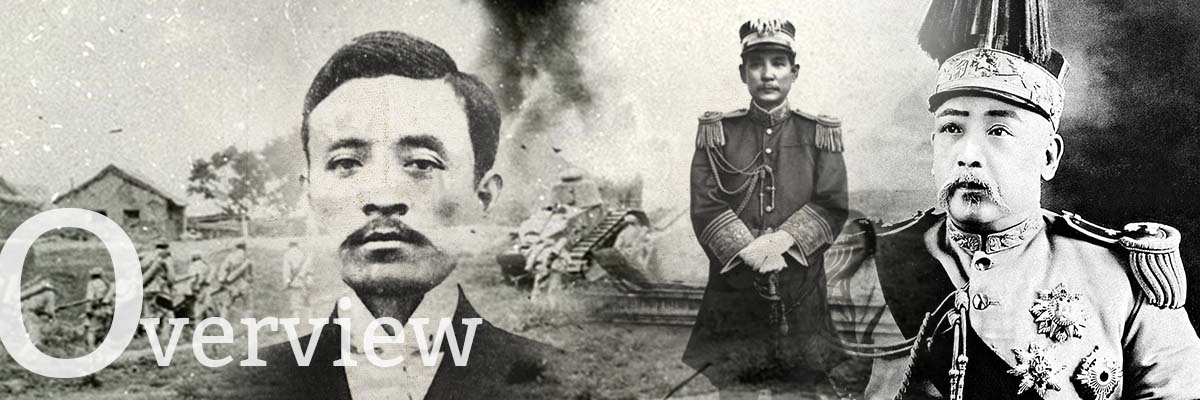Although the Qing dynasty ended and the Republican China was established, its internal and external challenges continued in its founding days. On 11 March 1912, the day after Yuan Shikai’s (袁世凱) ascendancy as the Provisional President of the Republic of China in Beijing (北京), Sun Yat-sen (孫中山) and other members promulgated the Provisional Constitution of the Republic of China (《中華民國臨時約法》), which stipulated the adoption of cabinet collective responsibility.
In August of the same year, Song Jiaoren (宋教仁) and his supporters restructured the United League (同盟會) into the political party Kuomintang (Chinese Nationalist Party, 國民黨). The newly formed party won a majority of seats in the National Assembly election in December that year, which alerted Yuan to the threat it posed to his power. In March 1913, Song was assassinated. Shortly afterwards, Yuan dismissed the Kuomintang governors of several provinces. Li Liejun (李烈鈞), the deposed governor of Jiangxi Province (江西), became the first to revolt against Yuan in July 1913. However, this Second Revolution (二次革命) was crushed in just two months. With the opposition removed, Yuan officially became the President of the Republic of China and ordered the Kuomintang’s dissolution. Sun formed a new organisation named the Chinese Revolutionary Party (中華革命黨) in Japan in July 1914 to continue to rally opposition against Yuan.
At the end of 1915, Yuan attempted to become emperor. In the fifth year of the Republic of China (1916), he came to the throne and declared that year the founding year of the “Hongxian regime” (洪憲). In response, Cai E (蔡鍔) declared war on Yuan in Yunnan Province (雲南), which eventually turned into the National Protection War (護國戰爭) against Yuan. In the end, Yuan was forced to abandon the monarchy after a mere 83 days and died shortly afterwards. Li Yuanhong (黎元洪) succeeded as president while Duan Qirui (段祺瑞) became the premier. The period that followed was marked by disputes between the Li-led presidential palace and the Duan-led state council.
In July 1917, Zhang Xun (張勳), a Qing loyalist, tried to restore the last Qing emperor Puyi (溥儀), an attempt that lasted for 12 days. Once Duan regained power, he declared China’s support for the Allied Powers in the First World War and the abolition of the Provisional Constitution of the Republic of China. This prompted Sun to start the Constitutional Protection Movement (護法運動) in the south, driving a North-South divergence and bringing instability to China. However, the Constitutional Protection Movement failed eventually as the southern warlords did not offer sincere support to Sun.
With Yuan’s death, the Beiyang Army split into different cliques including the Anhui (皖), Zhili (直), and Fengtian (奉) cliques. These cliques and other major and minor regional warlords gradually seized control of the central or local governments and stake out their own territories. It resulted in nationwide warring chaos.
Amidst the turmoil, Russia, Britain, and Japan were actively tampering with the Chinese sovereignty over such as Outer Mongolia, Tibet, and Shandong Province (山東) as well. The new Republic was faced with a multitude of internal and external challenges.





